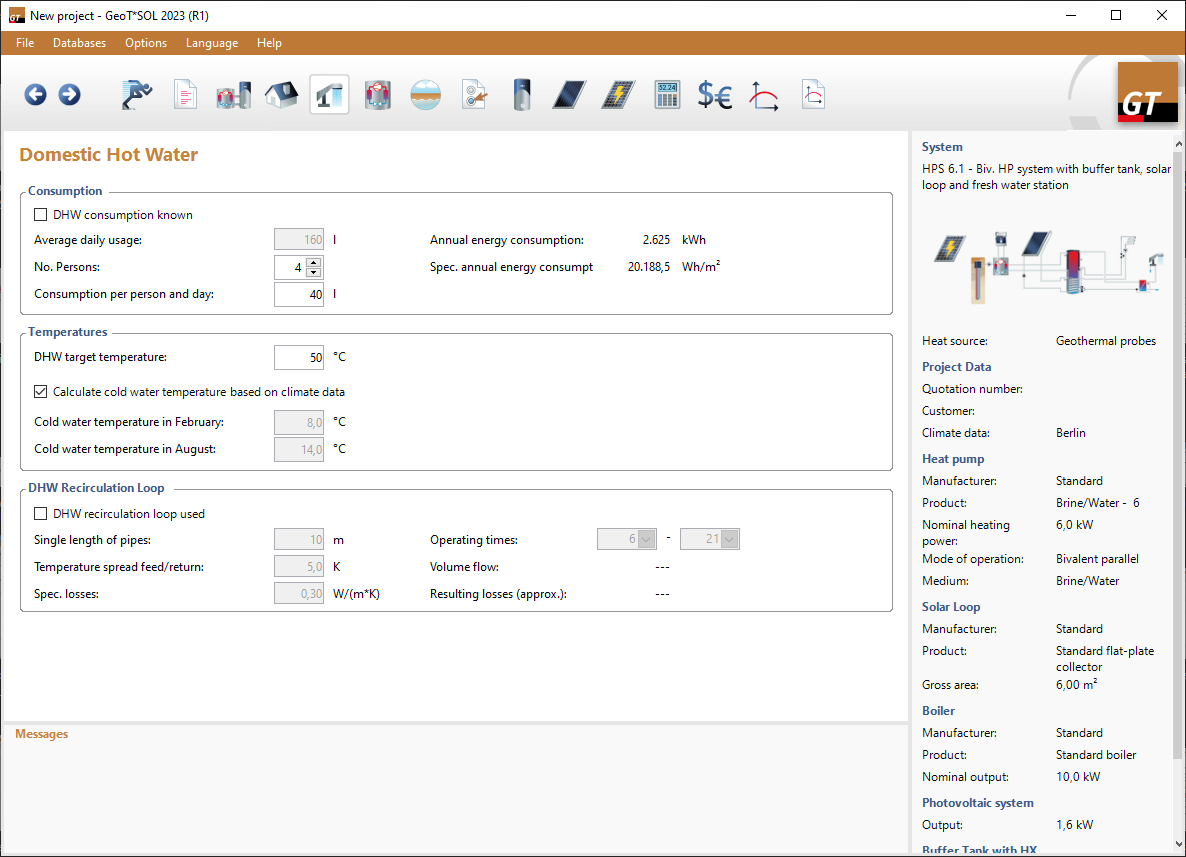The heating energy requirement for domestic hot water is an essential parameter for the design of the heat pump.
Proceed as follows:
Hot water consumption
-
Click the
 DHW consumption known checkbox if you know the total daily DHW consumption.
DHW consumption known checkbox if you know the total daily DHW consumption. -
Enter the value average daily consumption, i.e., the total daily DHW consumption.
or
-
Leave the
 DHW consumption known checkbox deactivated.
DHW consumption known checkbox deactivated. -
Enter the number of persons.
-
The consumption per person and day. From this information, the total water requirement is calculated:
Average total daily DHW requirement = Number of persons * Consumption per person and day in liters
The annual energy consumption and the specific annual energy consumption are calculated and displayed.
Temperatures
-
Enter the desired target temperature of the DHW. For target temperatures over 50 °C, a heating element is required. In monovalent operation, the DHW target temperature must be less than or equal to 55 °C.
-
You can let the program calculate the
 cold water temperature based on climate data.
cold water temperature based on climate data.
or
-
If you leave the
 calculate cold water temperature based on climate data checkbox unticked, you must enter both cold water temperatures for February and August yourself.
calculate cold water temperature based on climate data checkbox unticked, you must enter both cold water temperatures for February and August yourself.The difference between cold and hot water crucially affects the simulation results and the financial analysis.
A warning message appears if requirements are not met.
Circulation
The DHW supply can be operated with
 or without
or without
 circulation.
circulation.
 Without circulation: longer warm-up times, lower energy consumption = lower costs
Without circulation: longer warm-up times, lower energy consumption = lower costs
 Circulation increases comfort, as the hot water is immediately available even with long pipeways, but the circulation losses increase the energy requirement. As a result, it impacts the simulation results and the financial analysis.
Circulation increases comfort, as the hot water is immediately available even with long pipeways, but the circulation losses increase the energy requirement. As a result, it impacts the simulation results and the financial analysis.
-
Define the circulation by setting the single length of pipes, the temperature spread feed/return, and the specific losses.
-
Define the operating times.
As a preliminary result, the resulting losses and the necessary volume flow are displayed. These can differ slightly from the simulation results.
